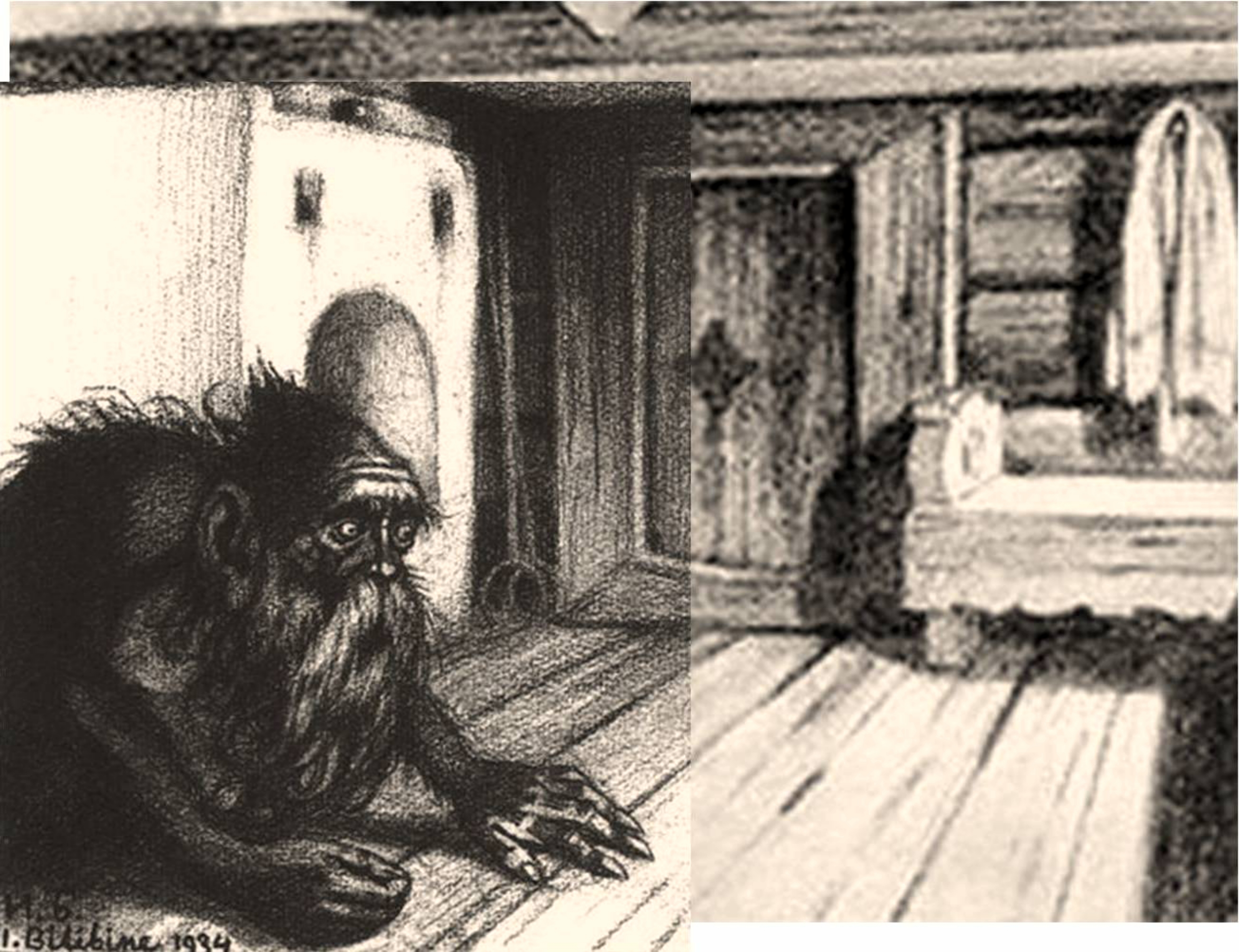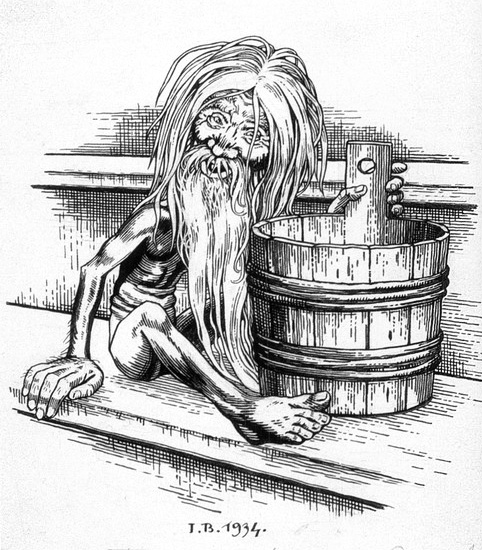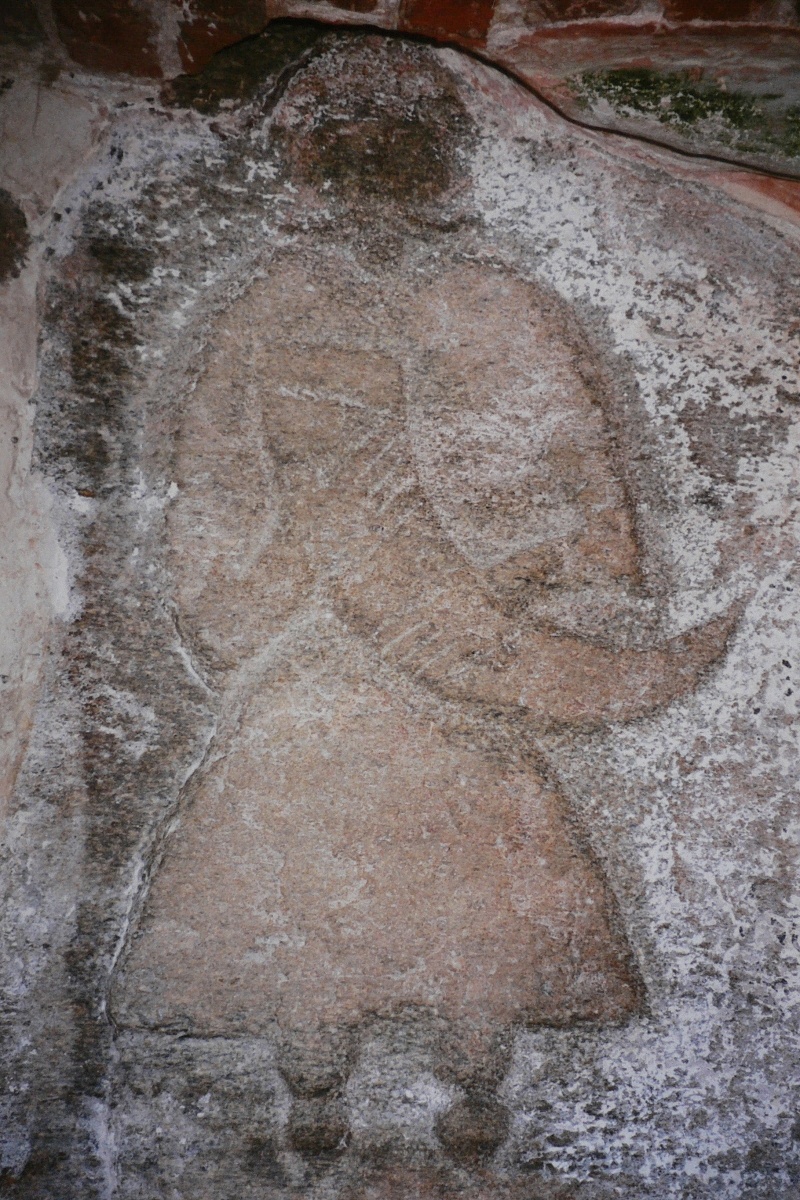|
Ovinnik
The Ovinnik (), Joŭnik or Jovnik () is a malevolent spirit of the Threshing floor, threshing house in Slavic folklore whose name derived from ''ovin'' 'barn'.Dixon-Kennedy, Mike (1998). ''Encyclopedia of Russian and Slavic Myth and Legend''. Santa Barbara, California: ABC-CLIO. p. 212. . He is prone to burning down the threshing houses by setting fire to the grain. To placate him, peasants would offer him roosters and bliny. On New Year's Eve, the touch of an Ovinnik would determine their fortune for the New Year. A warm touch meant good luck and fortune, while a cold touch meant unhappiness. See also * Bannik * Domovoi * Slavic mythology References Bibliography * * Slavic paganism Slavic tutelary deities {{Europe-myth-stub ... [...More Info...] [...Related Items...] OR: [Wikipedia] [Google] [Baidu] |
Domovoi
In the Slavic paganism, Slavic religious tradition, Domovoy (, literally "[the one] of the household"; also spelled ''Domovoi'', ''Domovoj'', and known as , (''Domovik''), (''Domovyk'') and (''Damavik'')) is the household spirit of a given kin. According to the Russian folklorist E. G. Kagarov, the Domovoy is a personification of the supreme Rod (Slavic religion), Rod in the microcosm of kinship. Sometimes he has a female counterpart, Domania, the goddess of the household, though he is most often a single god. The Domovoy expresses himself as a number of other spirits of the household in its different functions. Etymology and belief The term ''Domovoy'' comes from the Indo-European root *''dom'', which is shared by many words in the semantic field of "abode", "domain" in the Indo-European languages (cf. Latin ''domus'', "house"). The Domovoy have been compared to the Roman ''Di Penates'', the ''genius (mythology), genii'' of the family. Helmold ( 1120–1177), in his ''Chroni ... [...More Info...] [...Related Items...] OR: [Wikipedia] [Google] [Baidu] |
Bannik
The Bannik () is a bathhouse ('' banya'') spirit in Slavic mythology.Alexinsky, G. ''Slavonic Mythology'' in ''New Larousse Encyclopedia of Mythology''. Prometheus Press, 1973, p. 287-88 He is usually described as a small, naked old man with a long beard, his body covered in the birch leaves left over from well used bath brooms. Many accounts also claim that he is a shapeshifter and can appear as a local person to someone who stumbles across him, or even as a stone or coal in the oven heating the bathhouse. Slavic bathhouses resemble saunas, with an inner steaming room and an outer changing room. A place where women gave birth and practiced divinations, the bathhouse was strongly endowed with vital forces. The third firing (or fourth, depending on tradition) was reserved for the bannik, and, given his inclination to invite demons and forest spirits to share his bath, no Christian images were allowed lest they offend the occupants. If disturbed by an intruder while washing, the ban ... [...More Info...] [...Related Items...] OR: [Wikipedia] [Google] [Baidu] |
Malevolent Spirit
In mythology and folklore, a vengeful ghost or vengeful spirit is said to be the ghost, spirit of a dead person who returns from the afterlife to seek revenge for a cruel, unnatural or unjust death. In certain cultures where funeral and burial or cremation ceremonies are important, such vengeful spirits may also be considered as unhappy ghosts of individuals who have not been given a proper funeral. Cultural background The concept of a vengeful ghost seeking retribution for harm that it endured as a living person goes back to ancient times and is part of many cultures. According to such legends and beliefs, they roam the world of the living as restless spirits, seeking to have their grievances redressed, and may not be satisfied until they have succeeded in punishing either their murderers or their tormentors. In certain cultures vengeful ghosts are mostly female, said to be women that were unjustly treated during their lifetime. Such women or girls may have died in despair or t ... [...More Info...] [...Related Items...] OR: [Wikipedia] [Google] [Baidu] |
Threshing Floor
Threshing or thrashing is the process of loosening the edible part of grain (or other crop) from the straw to which it is attached. It is the step in grain preparation after reaping. Threshing does not remove the bran from the grain. History of threshing Through much of the important history of agriculture, threshing was time-consuming and usually laborious, with a bushel of wheat taking about an hour. In the late 18th century, before threshing was mechanized, about one-quarter of agricultural labor was devoted to it. It is likely that in the earliest days of agriculture the little grain that was raised was shelled by hand, but as the quantity increased the grain was probably beaten out with a stick, or the sheaf beaten upon the ground. An improvement on this, as the quantity further increased, was the practice of the ancient Egyptians of spreading out the loosened sheaves on a circular enclosure of hard ground, and driving oxen, sheep or other animals round and round over it ... [...More Info...] [...Related Items...] OR: [Wikipedia] [Google] [Baidu] |
Slavic Folklore
Slavic folklore encompasses the folklore of the Slavic peoples The Slavs or Slavic people are groups of people who speak Slavic languages. Slavs are geographically distributed throughout the northern parts of Eurasia; they predominantly inhabit Central Europe, Eastern Europe, Southeast Europe, Southeast ... from their earliest records until today. Folklorists have published a variety of works focused specifically on the topic over the years. There are few written records of pagan Slavic beliefs; research of the pre-Christian Slavic beliefs is challenging due to a stark class divide between nobility and peasantry who worshipped separate deities. Many Christian beliefs were later integrated and synthesized into Slavic folklore. See also * Vladimir Propp, Russian folklorist who specialized in morphology * Supernatural beings in Slavic religion * Deities of Slavic religion References Further reading * * {{Folklore-stub ... [...More Info...] [...Related Items...] OR: [Wikipedia] [Google] [Baidu] |
Threshing
Threshing or thrashing is the process of loosening the edible part of grain (or other crop) from the straw to which it is attached. It is the step in grain preparation after reaping. Threshing does not remove the bran from the grain. History of threshing Through much of the important history of agriculture, threshing was time-consuming and usually laborious, with a bushel of wheat taking about an hour. In the late 18th century, before threshing was mechanized, about one-quarter of agricultural labor was devoted to it. It is likely that in the earliest days of agriculture the little grain that was raised was shelled by hand, but as the quantity increased the grain was probably beaten out with a stick, or the sheaf beaten upon the ground. An improvement on this, as the quantity further increased, was the practice of the ancient Egyptians of spreading out the loosened sheaves on a circular enclosure of hard ground, and driving oxen, sheep or other animals round and round over i ... [...More Info...] [...Related Items...] OR: [Wikipedia] [Google] [Baidu] |
Bliny
Blini (plural ''blinis'' or ''blini'', rarely ''bliny''; pl., Ukrainian: млинці pl., ''mlyntsi''), singular: blin, are an Eastern European crêpe made from various kinds of flour of buckwheat, wheat, etc. They may be served with smetana, cottage cheese, caviar and other garnishes, or simply smeared with butter. They are a traditional Slavic dish. In the West, blini traditionally refers to small savory pancakes made with leavened batter. In modern Russian, the term most often refers to pan-sized leavened thin pancakes, although smaller leavened pancakes are also called blini. Smaller and thicker pancakes (with several of them baked on one larger pan) are called ''oladyi''. Blintzes, called ''blinchiki'' (little blinis) in Russian are an offshoot of blini or crêpes. They are basically rolls based on thin pancakes usually made of wheat flour, folded to form a casing for various kinds of filling, typically cheese, fruit, or (in Russian cuisine) pre-fried minced meat, ... [...More Info...] [...Related Items...] OR: [Wikipedia] [Google] [Baidu] |
New Year's Eve
In the Gregorian calendar, New Year's Eve refers to the evening, or commonly the entire day, of the last day of the year, 31 December, also known as Old Year's Day. In many countries, New Year's Eve is celebrated with dancing, eating, drinking, and watching or lighting fireworks. Many Christians attend a watchnight service to mark the occasion. New Year's Eve celebrations generally continue into New Year's Day, January 1, 1 January, past midnight. The local time zone determines the advent of the New Year; the first places to welcome the New Year are west of the International Date Line: the Line Islands (part of Kiribati), Samoa and Tonga, in the Pacific Ocean. In contrast, American Samoa, Baker Island and Howland Island (part of the United States Minor Outlying Islands) are among the last. By region Africa Algeria In Algeria, New Year's Eve is usually celebrated with family and friends. In the largest cities, there are fireworks at midnight. The Martyrs' Memorial, Algiers, Ma ... [...More Info...] [...Related Items...] OR: [Wikipedia] [Google] [Baidu] |
Slavic Mythology
Slavic paganism, Slavic mythology, or Slavic religion refer to the Religion, religious beliefs, myths, and ritual practices of the Slavs before Christianisation of the Slavs, Christianisation, which occurred at various stages between the 8th and the 13th century. The South Slavs, who likely settled in the Balkans during the 6th–7th centuries AD, bordering with the Byzantine Empire to the south, came under the sphere of influence of Eastern Christianity relatively early, beginning with the creation of writing systems for Slavic languages (first Glagolitic, and then Cyrillic script) in 855 by the brothers Saints Cyril and Methodius and the adoption of Christianity in First Bulgarian Empire, Bulgaria in 864 and 863 in Great Moravia. The East Slavs followed with the official adoption in 988 by Vladimir the Great of Kievan Rus'. The process of Christianising the West Slavs was more gradual and complicated compared to their eastern counterparts. The Moravians accepted Christianity a ... [...More Info...] [...Related Items...] OR: [Wikipedia] [Google] [Baidu] |
Slavic Paganism
Slavic paganism, Slavic mythology, or Slavic religion refer to the religious beliefs, myths, and ritual practices of the Slavs before Christianisation, which occurred at various stages between the 8th and the 13th century. The South Slavs, who likely settled in the Balkans during the 6th–7th centuries AD, bordering with the Byzantine Empire to the south, came under the sphere of influence of Eastern Christianity relatively early, beginning with the creation of writing systems for Slavic languages (first Glagolitic, and then Cyrillic script) in 855 by the brothers Saints Cyril and Methodius and the adoption of Christianity in Bulgaria in 864 and 863 in Great Moravia. The East Slavs followed with the official adoption in 988 by Vladimir the Great of Kievan Rus'. The process of Christianising the West Slavs was more gradual and complicated compared to their eastern counterparts. The Moravians accepted Christianity as early as 831, the Bohemian dukes followed in 845, and the ... [...More Info...] [...Related Items...] OR: [Wikipedia] [Google] [Baidu] |








